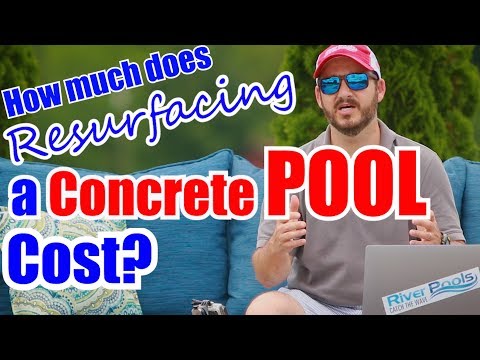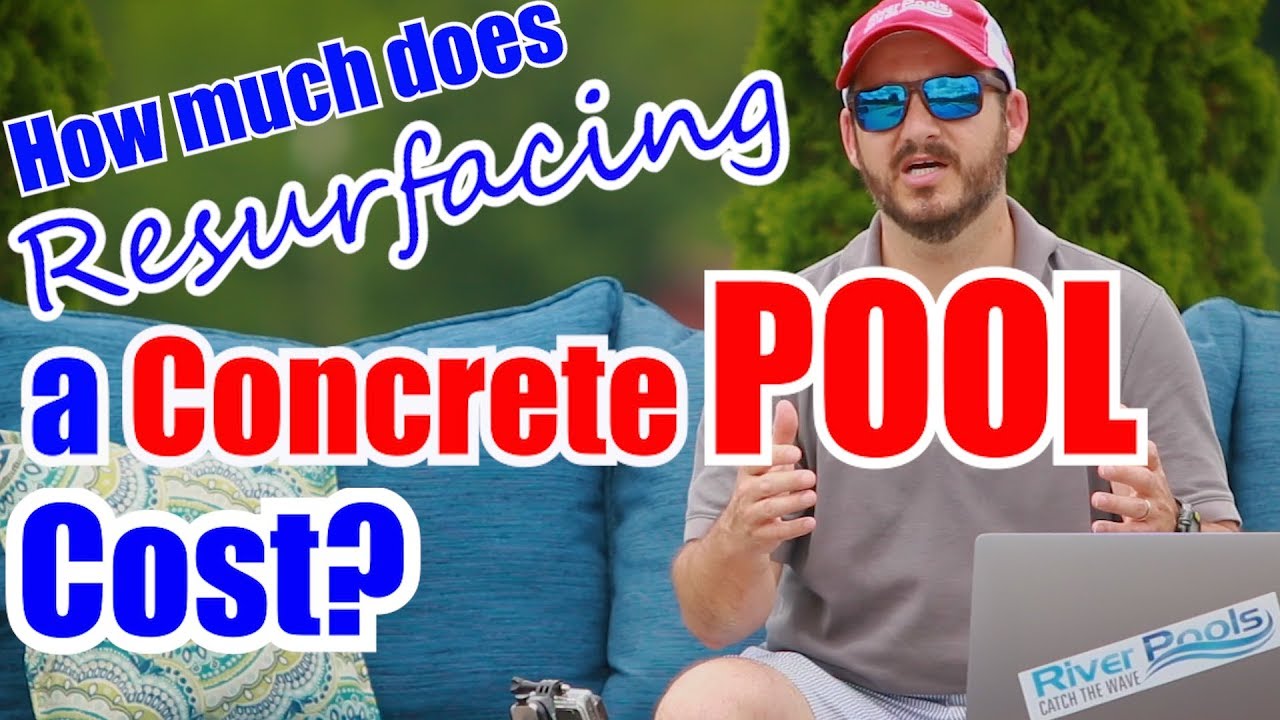Resurfacing a pool is a transformative process that can breathe new life into your tired and worn-out swimming pool. Over time, constant exposure to the elements, chemicals, and general wear and tear can cause the pool’s surface to deteriorate, leaving it looking dull, cracked, and uninviting. However, with professional pool resurfacing, you can restore your pool to its former glory, enhancing both its aesthetic appeal and functionality. This comprehensive procedure involves removing the old, damaged surface and replacing it with a fresh layer of high-quality material. Whether you opt for plaster, pebble, or tile finishes, resurfacing opens up a world of possibilities to customize your pool’s appearance, transforming it into a stunning oasis that perfectly complements your outdoor space. Not only does resurfacing revitalize your pool’s appearance, but it also enhances its durability and longevity, ensuring that you can enjoy countless hours of swimming and relaxation for years to come. So, if you’re looking to give your pool a much-needed facelift and create an inviting atmosphere for family and friends, consider the remarkable benefits of resurfacing your pool. Trust the experts to handle the process, and get ready to witness the remarkable transformation of your pool into a true backyard paradise.

Resurfacing a Pool
| Aspect | Explanation |
|---|---|
| Definition | Resurfacing a pool refers to the process of renewing or restoring the pool’s interior finish or coating. It involves removing the existing surface, repairing any damages, and applying a new finish to enhance both aesthetics and functionality. |
| Reasons for Resurfacing | There are several reasons why resurfacing a pool may be necessary. Over time, the pool’s surface can become worn, faded, or stained due to chemical imbalances, exposure to harsh weather conditions, or regular wear and tear. Resurfacing not only enhances the pool’s appearance but also improves its durability, making it more resistant to damage and prolonging its lifespan. |
| Types of Pool Finishes | Various materials can be used to resurface a pool, each offering unique characteristics and aesthetic appeal. Some common options include plaster, pebble, quartz, and tile finishes. Plaster is a cost-effective choice known for its smooth and classic appearance. Pebble finishes provide a more natural and textured look, while quartz finishes offer increased durability and stain resistance. Tile finishes, on the other hand, provide a luxurious and customizable option. |
| Process | The process of resurfacing a pool typically involves the following steps:
|
| Maintenance | Proper maintenance is crucial to preserving the newly resurfaced pool. Regular cleaning, balanced water chemistry, and appropriate use of pool chemicals are essential. Additionally, avoiding abrasive cleaning tools and minimizing exposure to extreme weather conditions can help maintain the finish’s integrity and extend its lifespan. |
Diving into the Price of Concrete Pool Resurfacing
What is Resurfacing a Pool?
Resurfacing a pool is the process of applying a new layer of finish to the interior surface of a swimming pool. Over time, the surface of a pool can become worn, stained, or damaged, affecting both its appearance and functionality. Resurfacing the pool not only improves its aesthetic appeal but also helps to maintain its structural integrity.
Signs that Your Pool Needs Resurfacing
1. Flaking or Peeling Surface: One of the most obvious signs that your pool needs resurfacing is the presence of flaking or peeling surface. This could be due to the aging of the pool or the use of low-quality materials during its construction.
2. Stains and Discoloration: If you notice stubborn stains or discoloration on your pool’s surface that cannot be removed through regular cleaning, it may be time to consider resurfacing. These stains can be caused by various factors such as algae growth, mineral deposits, or chemical imbalances.
3. Rough Texture: A rough texture on the pool’s surface can be uncomfortable to touch and may even cause minor injuries to swimmers. If your pool’s surface feels rough or abrasive, it is a clear indication that it needs resurfacing.
4. Water Loss: If you observe a significant amount of water loss in your pool, it could be due to cracks or leaks in the surface. Resurfacing can help seal these cracks and prevent further water loss.
5. Outdated Appearance: If your pool’s surface has become outdated or no longer matches your desired aesthetic, resurfacing is an excellent way to give it a fresh and modern look. With a wide range of finish options available, you can completely transform the appearance of your pool.
The Resurfacing Process
Resurfacing a pool involves several steps to ensure a long-lasting and high-quality finish. Here is a general overview of the resurfacing process:
1. Drain the Pool: The first step is to drain the pool completely. This ensures that the surface is fully accessible for preparation and resurfacing.
2. Prepare the Surface: Once the pool is drained, the surface needs to be prepared by removing any loose debris, old coatings, or damaged sections. This may involve sanding, acid washing, or using specialized tools depending on the condition of the pool.
3. Repair Cracks and Damage: Any cracks or damage on the pool’s surface should be repaired before resurfacing. This may involve filling the cracks with an appropriate sealant and allowing it to cure before proceeding.
4. Apply the Finish: After the surface is properly prepared and repaired, the new finish can be applied. There are various types of finishes available, including plaster, aggregate, and tile. Each has its own unique characteristics and benefits.
5. Fill the Pool: Once the finish is applied, the pool is refilled with water. It is important to follow the manufacturer’s guidelines on filling and treating the water to ensure the longevity of the new surface.
Benefits of Resurfacing a Pool
1. Enhanced Durability: Resurfacing a pool improves its durability and extends its lifespan. A new finish can provide added protection against wear and tear, chemicals, and UV radiation.
2. Improved Safety: Rough or damaged pool surfaces can be hazardous to swimmers. Resurfacing eliminates rough patches, making the pool safer and more enjoyable for everyone.
3. Aesthetic Appeal: Resurfacing allows you to choose a new finish that suits your taste and style. Whether you prefer a classic white plaster or a vibrant aggregate finish, resurfacing can enhance the overall appearance of your pool.
4. Increased Property Value: A well-maintained and visually appealing pool can significantly increase the value of your property. Resurfacing ensures that your pool remains an attractive feature for potential buyers or renters.
5. Cost Savings in the Long Run: While resurfacing a pool involves an upfront investment, it can save you money in the long run. By addressing any existing damage or leaks, resurfacing helps prevent more extensive and costly repairs down the line.
Maintaining a Resurfaced Pool
Once your pool has been resurfaced, it is essential to maintain it properly to prolong its lifespan and preserve its appearance. Here are some tips for maintaining a resurfaced pool:
1. Regular Cleaning: Clean your pool regularly to prevent the buildup of dirt, debris, and algae. Use appropriate cleaning tools and chemicals recommended for your specific pool finish.
2. Proper Chemical Balance: Regularly test and balance the pool’s water chemistry to prevent staining, scaling, or damage to the new surface. Consult a professional or use water testing kits for accurate results.
3. Avoid Harsh Cleaning Methods: Avoid using abrasive brushes or cleaning agents that can damage the new finish. Opt for gentle cleaning tools and follow the manufacturer’s recommendations.
4. Address Issues Promptly: If you notice any cracks, leaks, or other issues, address them promptly to prevent further damage. Consult a professional pool technician if needed.
5. Schedule Regular Inspections: Schedule regular inspections with a pool professional to identify any potential issues early on and address them before they become significant problems.
In conclusion, resurfacing a pool is a crucial part of its maintenance and can bring numerous benefits. By recognizing the signs that your pool needs resurfacing, understanding the resurfacing process, and properly maintaining the newly resurfaced pool, you can ensure that your pool remains a beautiful and enjoyable feature for years to come.

